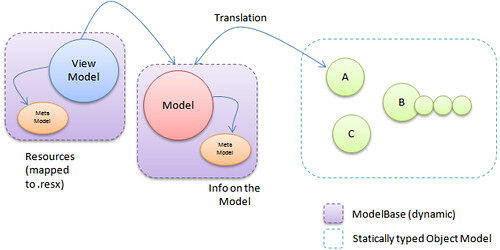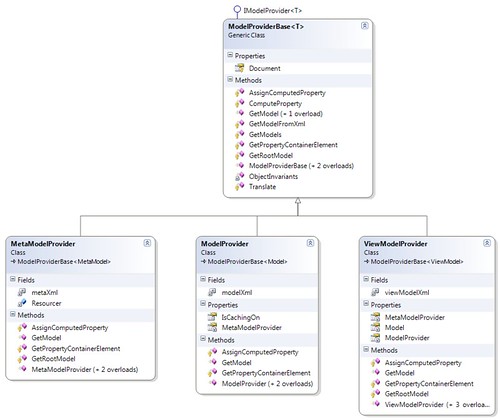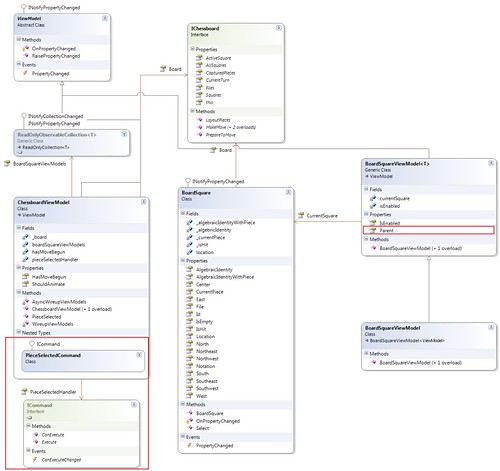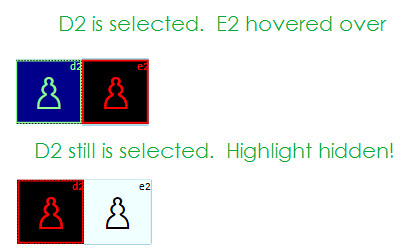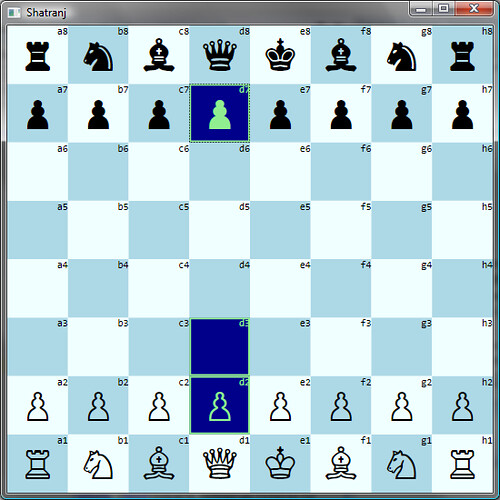1 <RadioButton x:Class="Shatranj.BoardSquareView"
2 xmlns="http://schemas.microsoft.com/winfx/2006/xaml/presentation"
3 xmlns:x="http://schemas.microsoft.com/winfx/2006/xaml"
4 xmlns:Shatranj="clr-namespace:Shatranj">
5
6 <RadioButton.Resources>
7 <Shatranj:ForceToGroupNameConverter x:Key="ForceToGroupNameConverter" />
8 <Style TargetType="{x:Type Shatranj:BoardSquareView}">
9 <Setter Property="IsChecked" Value="false" />
10 <Setter Property="Background"
11 Value="{Binding Converter={StaticResource LocationToColorConverter},
12 Mode=OneWay}" />
13 <Setter Property="BorderThickness" Value="0" />
14 <Setter Property="GroupName"
15 Value="{Binding Converter={StaticResource ForceToGroupNameConverter}}" />
16 <Setter Property="Template">
17 <Setter.Value>
18 <ControlTemplate TargetType="{x:Type Shatranj:BoardSquareView}">
19 <ControlTemplate.Resources>
20 <Style TargetType="RadioButton">
21 <Setter Property="Background"
22 Value="{Binding Converter={StaticResource LocationToColorConverter},
23 Mode=OneWay}" />
24 </Style>
25 <Shatranj:BoolToVisibilityConverter x:Key="BoolToVisibilityConverter" />
26 </ControlTemplate.Resources>
27
28 <Grid Background="{TemplateBinding Background}">
29 <Grid.RowDefinitions>
30 <RowDefinition Height="0.200*" />
31 <RowDefinition Height="0.800*" />
32 </Grid.RowDefinitions>
33 <Grid.ColumnDefinitions>
34 <ColumnDefinition />
35 </Grid.ColumnDefinitions>
36 <Border BorderBrush="{TemplateBinding BorderBrush}"
37 BorderThickness="{TemplateBinding BorderThickness}"
38 Grid.Row="0" Grid.Column="0" Grid.RowSpan="2" />
39 <Viewbox Grid.Row="0" Grid.Column="0"
40 HorizontalAlignment="Right" VerticalAlignment="Stretch">
41 <TextBlock FontSize="12"
42 FontFamily="Consolas"
43 Text="{Binding Path=AlgebraicIdentity, Mode=OneWay}" />
44 </Viewbox>
45 <Viewbox Grid.RowSpan="2" Grid.Row="0"
46 HorizontalAlignment="Center" VerticalAlignment="Center">
47 <TextBlock FontFamily="Chess Cases"
48 Margin="3,3,3,3"
49 Text="{Binding Path=CurrentPiece.AltChar,
50 Mode=OneWay}" />
51 </Viewbox>
52
53 <Ellipse
54 MaxHeight="30" MaxWidth="30"
55 MinHeight="10" MinWidth="10"
56 Grid.Row="0" Grid.RowSpan="2"
57 Visibility="{Binding IsHit,
58 Converter={StaticResource BoolToVisibilityConverter}}">
59 <Ellipse.Fill>
60 <SolidColorBrush Color="Black" Opacity="0.5" />
61 </Ellipse.Fill>
62 </Ellipse>
63
64 </Grid>
65
66 <ControlTemplate.Triggers>
67 <Trigger Property="IsMouseOver" Value="true">
68 <Setter Property="Foreground" Value="Red" />
69 <Setter Property="Background" Value="Black" />
70 <Setter Property="BorderBrush" Value="Red" />
71 <Setter Property="BorderThickness" Value="2" />
72 </Trigger>
73 </ControlTemplate.Triggers>
74 </ControlTemplate>
75 </Setter.Value>
76 </Setter>
77 <Style.Triggers>
78 <Trigger Property="IsChecked" Value="true">
79 <Setter Property="Background" Value="DarkBlue" />
80 <Setter Property="Foreground" Value="LightGreen" />
81 <Setter Property="BorderBrush" Value="LightGreen" />
82 <Setter Property="BorderThickness" Value="2" />
83 </Trigger>
84 </Style.Triggers>
85 </Style>
86 </RadioButton.Resources>
87 </RadioButton>

